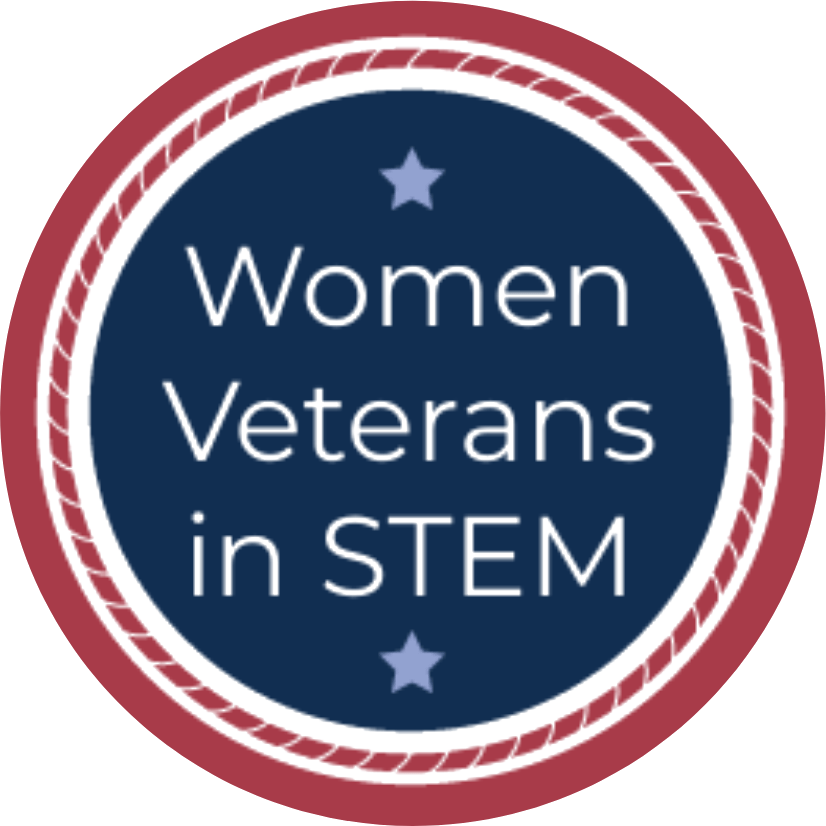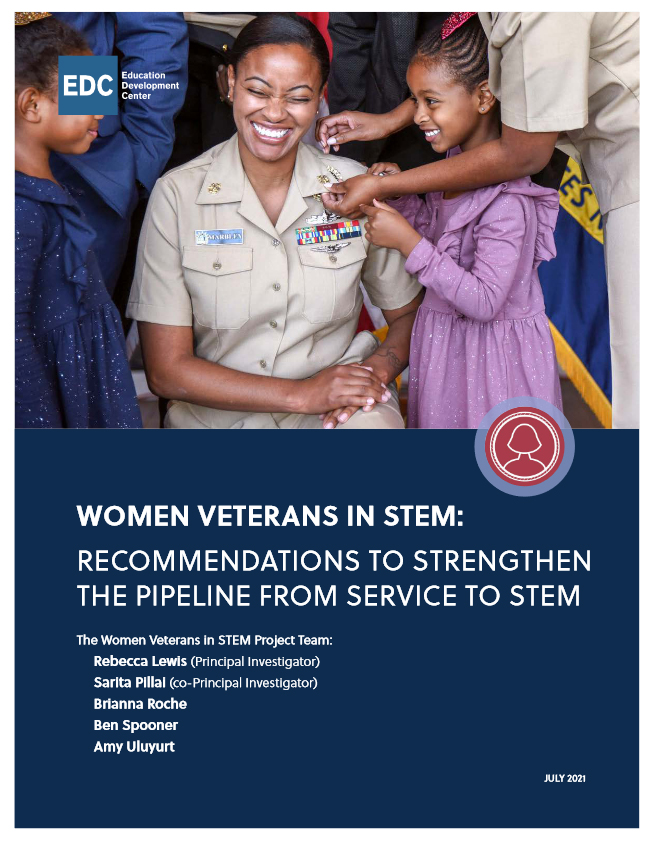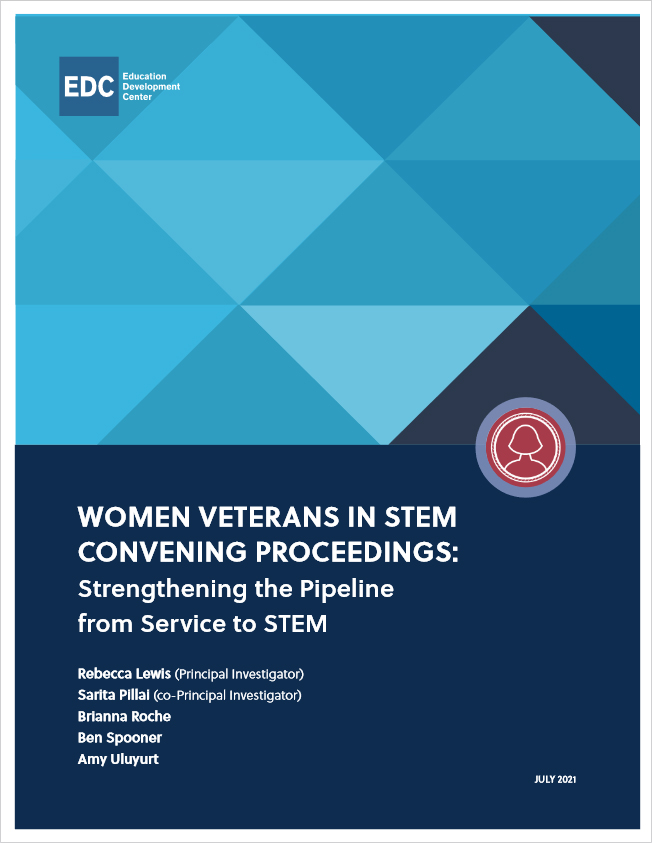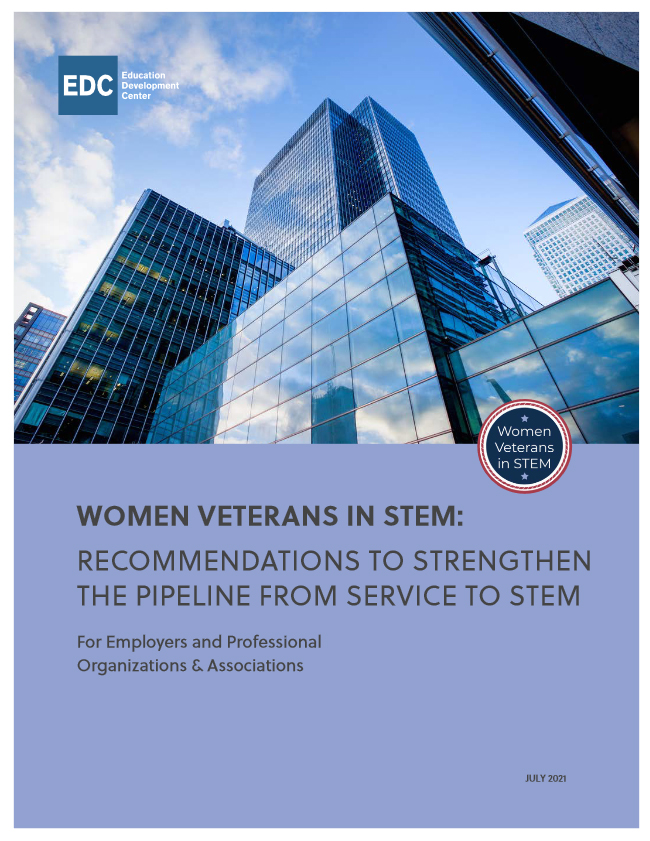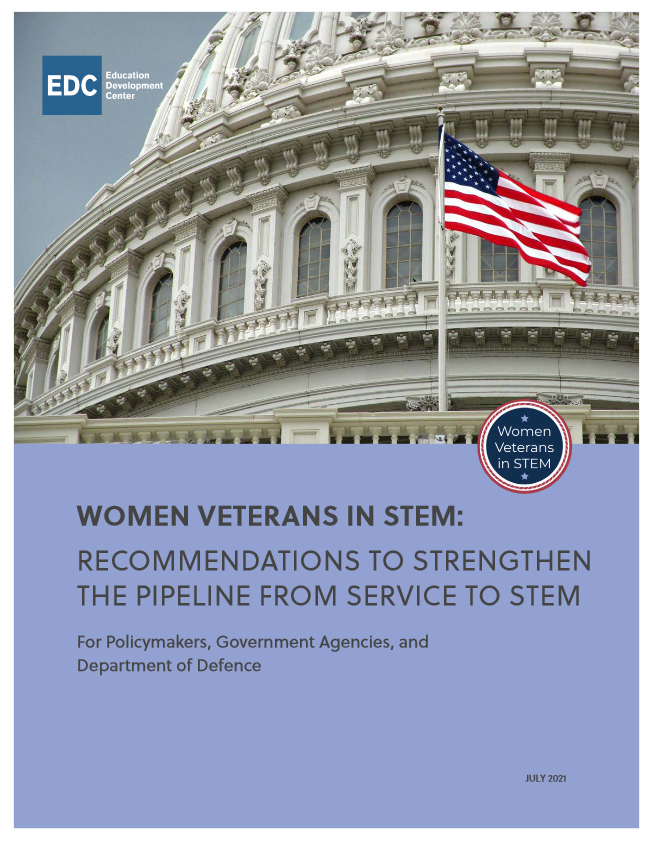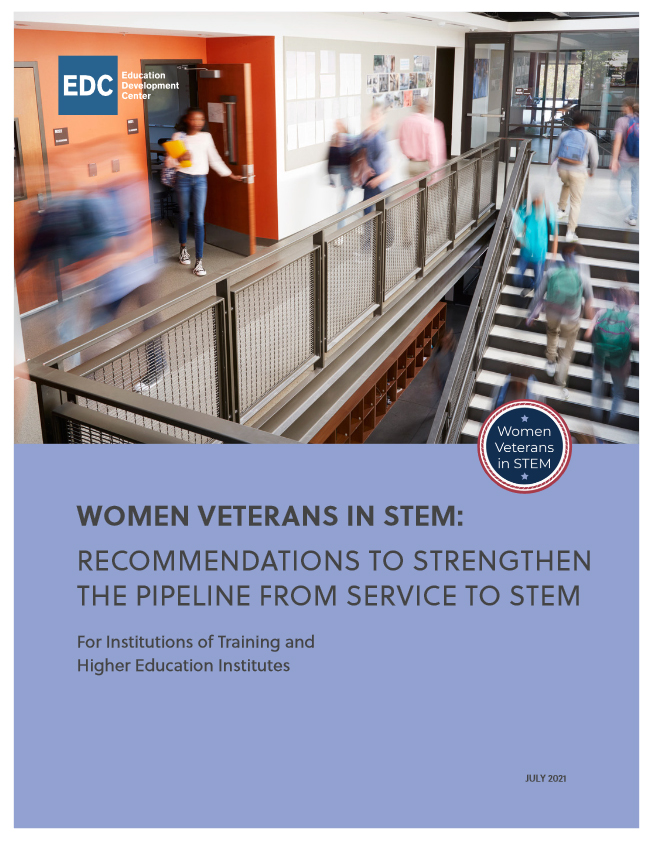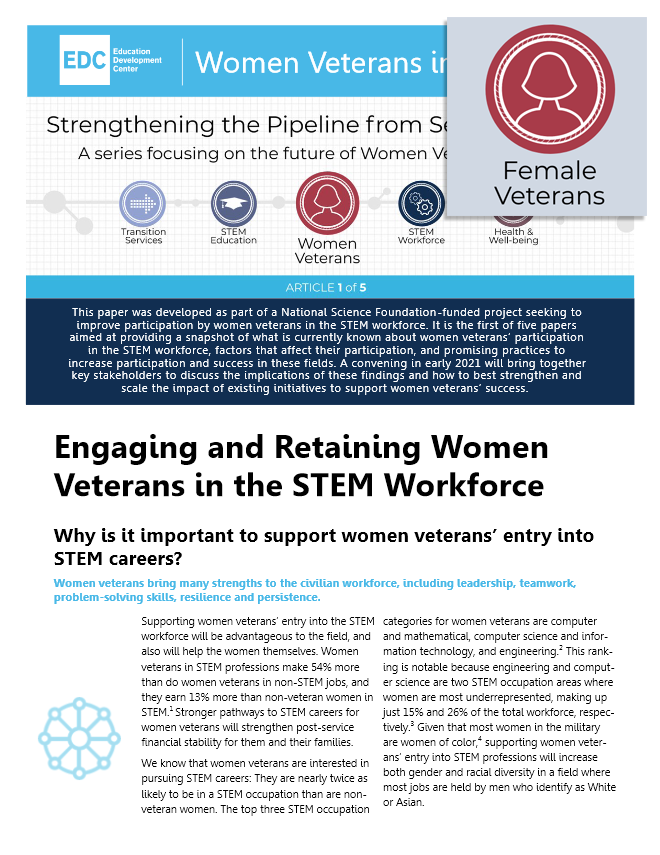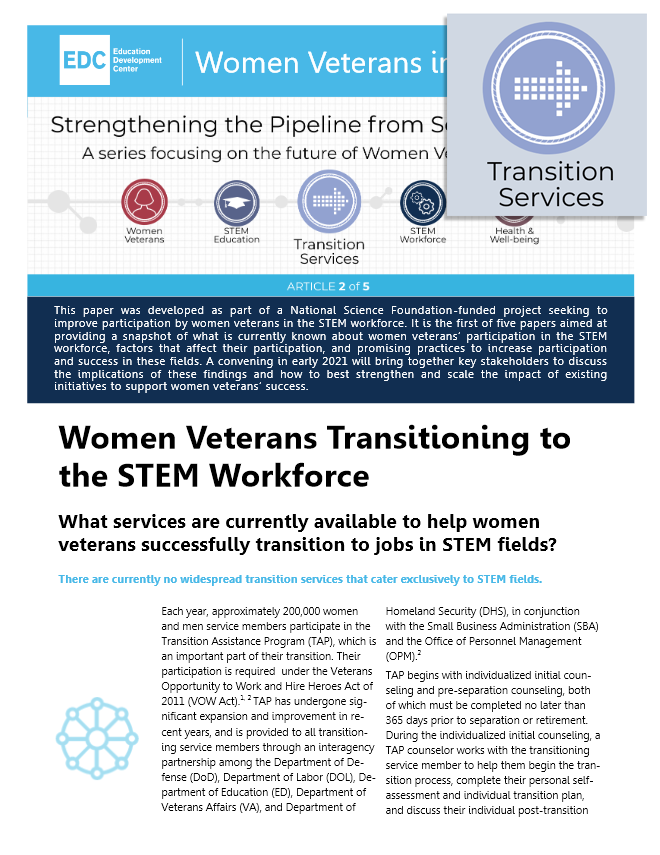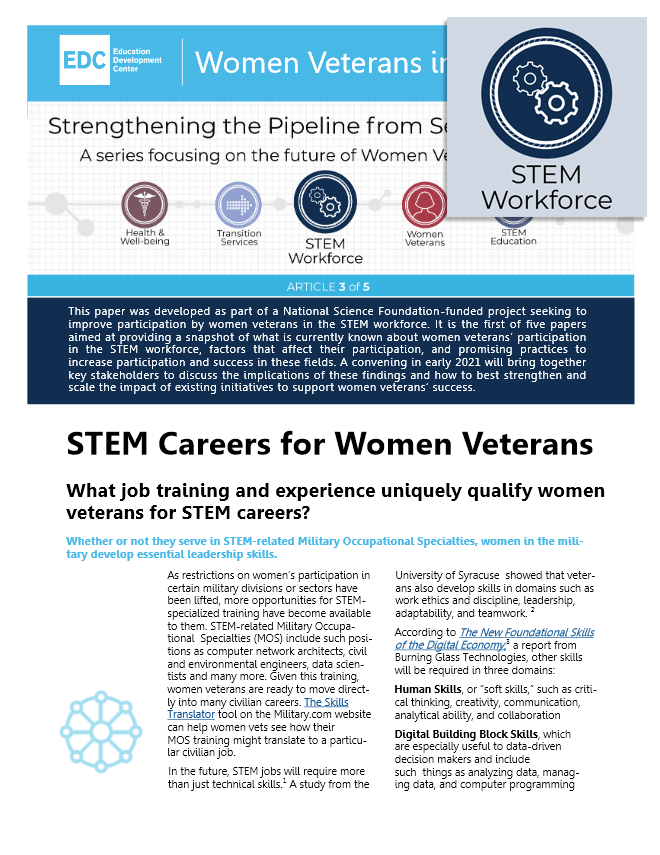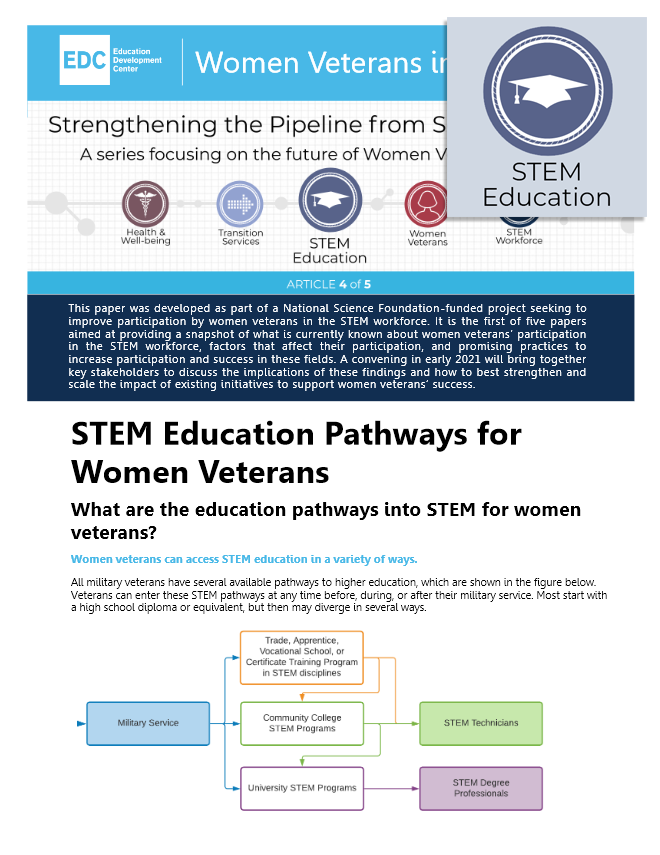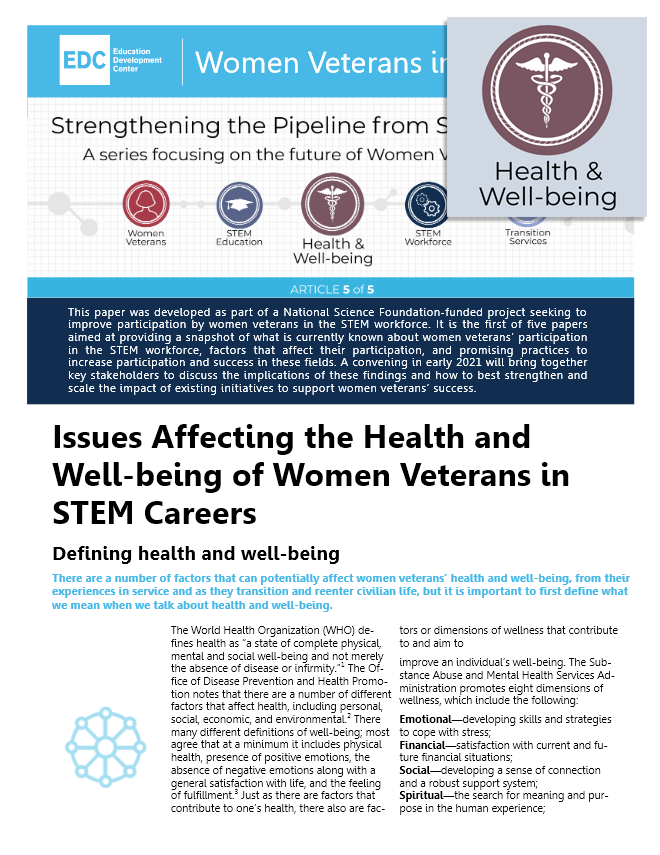At a virtual convening in March of 2021, EDC brought together over 75 key stakeholders representing women veterans, non-profit organizations and federal agencies that serve veterans, universities, STEM practitioners, and STEM industries to discuss findings and develop recommendations on how to best strengthen and scale the impact of existing initiatives to support women veterans’ success in the STEM Workforce. The recommendations report is available for download below along with a summary of the convening proceedings.
Prior to the virtual convening, EDC worked with an advisory board representing women veterans, non-profit organizations and federal agencies that serve veterans, universities, STEM practitioners, and STEM industries to develop “state of the state” white papers aligned with the focus areas: Veterans in the STEM Workforce, Veterans in STEM Education, Veteran Transitions to Civilian Workforce, and Veteran Health & Well-being. You can download and read the series of white papers below, as well as further research on engaging women veterans in STEM organized by the focus areas.
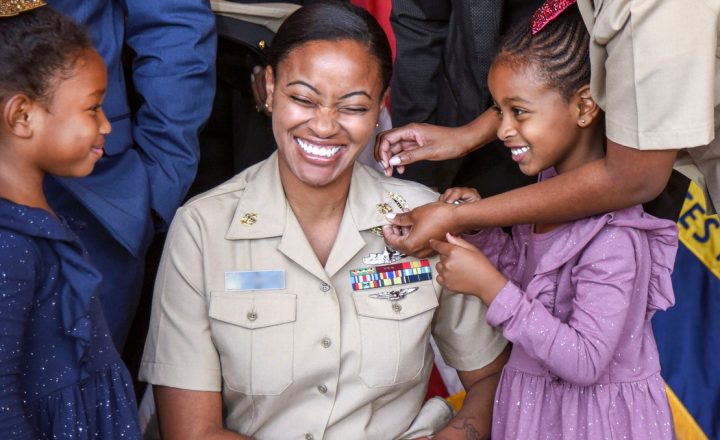
RECOMMENDATIONS REPORTS
WHITE PAPER REPORTS
Veterans in the STEM Workforce
A Case for Patient Philanthropy, Supporting Jobs and Careers for Military-Connected Americans. Institute for Veterans and Military Families, Syracuse University. (2018).
Enhancing Veterans’ Access to STEM Education and Careers : A Labor Market Analysis of Veterans in the STEM Workforce Institute for Veterans and Military Families, Syracuse University. Maury, R., Stone, B., & Armstrong, N. (2018).
Military a path to STEM careers, especially for women, study shows. The University of Alabama in Huntsville. Steele, J. (2019)
Veteran Entrepreneurship: Access to Capital Challenges and Opportunities. Institute for Veterans and Military Families, Syracuse University. Maury, R., Stone, B., Sears, K., & Sander, A.M. (2019).
Veteran Entrepreneurship: What You Should Know. Institute for Veterans and Military Families, Syracuse University. Maury, R. (2018).
Women Veterans Are Starting More and More STEM Businesses: Here Are the Resources They Need. Entrepreneur.Maury, R., Stutsman, M. (2019)
Workforce transition proves more challenging for female veterans. The Baines Report. Lange, R. & Cedillo, C. (2014).
Veterans in STEM Education
"The Military Taught Me How to Study, How to Work Hard": Helping Student-Veterans Transition by Building on Their Strengths. Community College Journal of Research and Practice. Blaauw-Hara, M. (2016).
Enrolling More Veterans at High-Graduation-Rate Colleges and Universities. Ithaka S+R. Hill, C., Kurzweil, M., Pisacreta, E. Schwartz, E. (2019)
Ensuring success for veterans with disabilities in STEM degree programs: recommendations from a workshop and case study of an evidence-based transition program. Institute for STEM Education and Research. Goldberg, M., Cooper, R., Milleville, M., Barry, A., Schein, M. (2015)
I Am a Post-9/11 Student Veteran. Student Veterans of America; Institute for Veterans and Military Families, Syracuse University. (2017).
Making the Case for Student Veterans: Building Support for Student Veteran Enrollment. Ithaka S+R. Lopez, S., Schwartz,. E., Davidson Pisacreta, E. (2020)
National Veteran Education Success Tracker: A Report on the Academic Success of Student Veterans Using the Post-9/11 GI Bill. Student Veterans of America. Cate, C., Lyon, J., Schmeling, J., Bogue, B. (2017)
Soldiers to Scientists: Military Service, Gender, and STEM Degree Earning. Socius: Sociological Research for a Dynamic World. Steidl, C., Werum, R., Harcey, S., Absalon, J., MillerMacPhee, A. (2020).
Student Veterans: A Valuable Asset to Higher Education. Institute for Veterans and Military Families, Syracuse University; Student Veterans of America. (2019).
The National Veteran Education Success Tracker (NVEST) Fact Sheets. Student Veterans of America. (2017)
Veteran Transitions to Civilian Workforce
Career development for female veterans: Facilitating successful transitions from military service to civilian employment. Advances in Developing Human Resources. Greer, T. (2017).
Chicagoland female veterans: A qualitative study of attachment to the labor force. The National Center on Family Homelessness. Thom, K., & Bassuk, E. (2012).
Communities Serve: A Systematic Review of Need Assessments on U.S. Veteran and Military-Connected Populations. Institute for Veterans and Military Families, Syracuse University. Van Slyke, R., Armstrong, N. (2019).
Pilot study of reintegration and service needs for women veteran mothers. U.S. Department of Veterans Affairs, Health Services Research and Development Service. Lange, G. (2008).
Return-to-work outcome rates of African American versus White veterans served by state vocational rehabilitation agencies: A randomized split-half cross-model validation research design. Rehabilitation Counseling Bulletin. Moore, C. L., Wang, N., Johnson, J., Manyibe, E. O., Washington, A. L., & Muhammad, A. (2016).
The emerging needs of veterans: A call to action for the social work profession. Health & Social Work. Franklin, E. (2009).
Women veterans in transition: Understanding the complexity of women veterans’ career transitions. Business and Professional Women’s Foundation (BPW). (2015).
Veteran Health & Wellbeing
A new generation of women veterans: Stressors faced by women deployed to Iraq and Afghanistan. Clinical Psychology Review. Street, A. E., Vogt, D., & Dutra, L. (2009).
Correlates of frequent mental distress among active and former military personnel. Journal of Military and Veterans’ Health. DiBiasio, E., Rosenthal, S. R., & Clark, M. A. (2014).
Homeless women veterans: Actions needed to ensure safe and appropriate housing. U.S. Government Accountability Office. (2011, December).
Improving Care and Service Delivery for Veterans: A Case Study of Enterprise Government Overview. Institute for Veterans and Military Families, Syracuse University. Huitink, Z., Armstrong, N.,Hidek, M., Birnbaum, N. (2018).
Responding to the needs of women veterans involved in the criminal justice system. The National Resource Center on Justice Involved Women. Ramirez, R. & Van Dieten, M. (2013).
Women Veterans Report: The past, present, and future of women veterans. Department of Veterans Affairs. National Center for Veterans Analysis and Statistics. (2017).
Women veterans: The long journey home. Disabled American Veterans (DAV). Murphy, F. M., & Hans, S. (2014).
Women warriors: Supporting she “who has borne the battle” (Issue Report). Iraq and Afghanistan Veterans of America. Mulhall, E. (2009).
